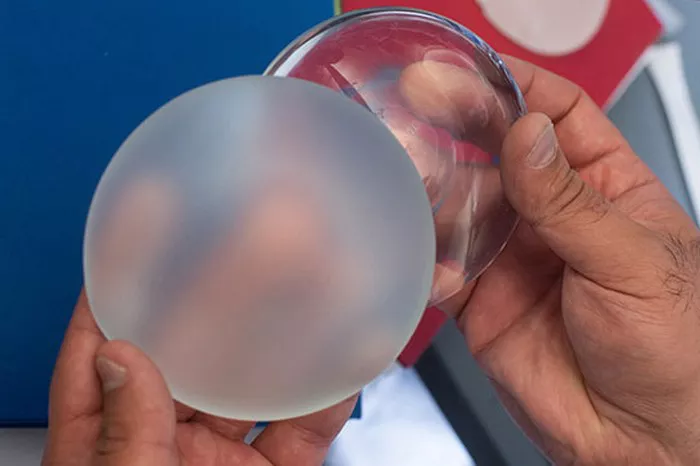Breast augmentation is a popular surgical procedure that involves the placement of breast implants to enhance the size and shape of the breasts. While breast implants have a high satisfaction rate and are generally safe, it’s important to be aware of potential complications and risks. In this article, we will discuss what can go wrong with breast implants and provide valuable information to help you make an informed decision.
Potential Complications and Risks
It’s important to note that complications and risks associated with breast implants are relatively rare. However, it’s crucial to understand and be aware of them before undergoing the procedure. Here are some potential issues that can arise:
- Capsular Contracture: Capsular contracture occurs when scar tissue forms around the breast implant and tightens, causing the breast to feel firm or hard. This can lead to discomfort, distortion of breast shape, and may require additional surgery to correct.
- Implant Rupture or Leakage: Breast implants can rupture or leak over time. Ruptures can occur due to trauma, aging of the implant, or manufacturing defects. Saline implants will deflate if ruptured, leading to noticeable changes in breast size. Silicone gel implants may rupture silently, and the gel may leak into the surrounding tissue. Regular monitoring and follow-up with your surgeon are crucial to detect and address implant rupture or leakage.
- Rippling or Wrinkling: In some cases, visible rippling or wrinkling of the breast implant can occur. This is more common with saline implants and can be more noticeable in individuals with thin skin or minimal breast tissue coverage.
- Infection: While rare, infection can occur after breast implant surgery. Infections may require antibiotic treatment or, in severe cases, removal of the implants until the infection is resolved.
- Hematoma: A hematoma is a collection of blood that can accumulate around the surgical site. It may require draining to alleviate pain, prevent infection, and promote proper healing.
- Seroma: Seroma is the buildup of fluid around the breast implant. It can cause swelling, discomfort, and may require drainage to ensure proper healing.
- Changes in Nipple Sensation: Some women may experience temporary or permanent changes in nipple sensation after breast augmentation. Nipples may become more or less sensitive, or sensation may be completely lost.
- Asymmetry: Despite efforts to achieve symmetrical results, slight differences in breast shape, size, or position can occur. Pre-existing asymmetry may also become more noticeable after breast augmentation.
- Breast Tissue Changes and Mammography: Breast implants can make it more challenging to perform and interpret mammograms. Special techniques may be required to ensure accurate breast cancer screenings.
- Psychological and Emotional Impact: It’s essential to consider the psychological and emotional impact of breast augmentation. Unrealistic expectations, body image concerns, and potential dissatisfaction with results can affect overall well-being. Open communication with your surgeon and realistic expectations are key to a positive experience.
Minimizing Risks and Ensuring Safety
While complications can occur, there are steps you can take to minimize risks and ensure a safe breast augmentation journey:
- Choose a Qualified and Experienced Surgeon: Selecting a board-certified plastic surgeon with extensive experience in breast augmentation is crucial. Research the surgeon’s credentials, read patient reviews, and view before-and-after photos to assess their expertise.
- Communicate Your Goals and Expectations: Openly discuss your goals and expectations with your surgeon during the consultation. This will help ensure that both you and your surgeon have a clear understanding of the desired outcomes.
- Follow Preoperative and Postoperative Instructions: Adhering to your surgeon’s preoperative and postoperative instructions is vital for a successful outcome. This includes proper preparation before surgery and following all postoperative care guidelines for a smooth recovery.
- Attend Regular Follow-up Appointments: Regular follow-up appointments with your surgeon are essential for monitoring your progress and detecting any potential complications early on. Don’t hesitate to reach out to your surgeon if you have any concerns or questions during the recovery process.
- Choose the Right Type and Size of Implants: Your surgeon will help you choose the appropriate type and size of breast implants based on your individual needs and body proportions. It’s important to have realistic expectations and understand the limitations of the procedure.
- Maintain a Healthy Lifestyle: Maintaining a healthy lifestyle can contribute to optimal healing and reduce the risk of complications. Follow a balanced diet, avoid smoking, and engage in regular exercise as approved by your surgeon.
Conclusion
While complications and risks associated with breast implants are relatively rare, it’s important to be aware of them and make an informed decision. Capsular contracture, implant rupture or leakage, rippling, infection, and changes in nipple sensation are among the potential complications. By choosing a qualified surgeon, maintaining open communication, and following preoperative and postoperative instructions, you can minimize risks and increase the likelihood of a successful breast augmentation outcome. Remember, regular follow-up appointments and monitoring are crucial to detect and address any potential complications early on.


